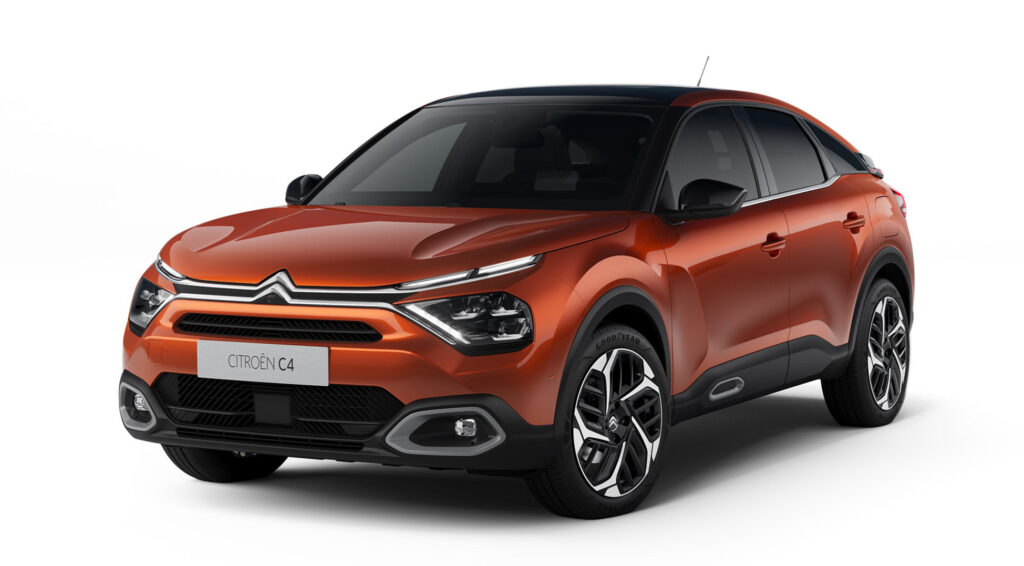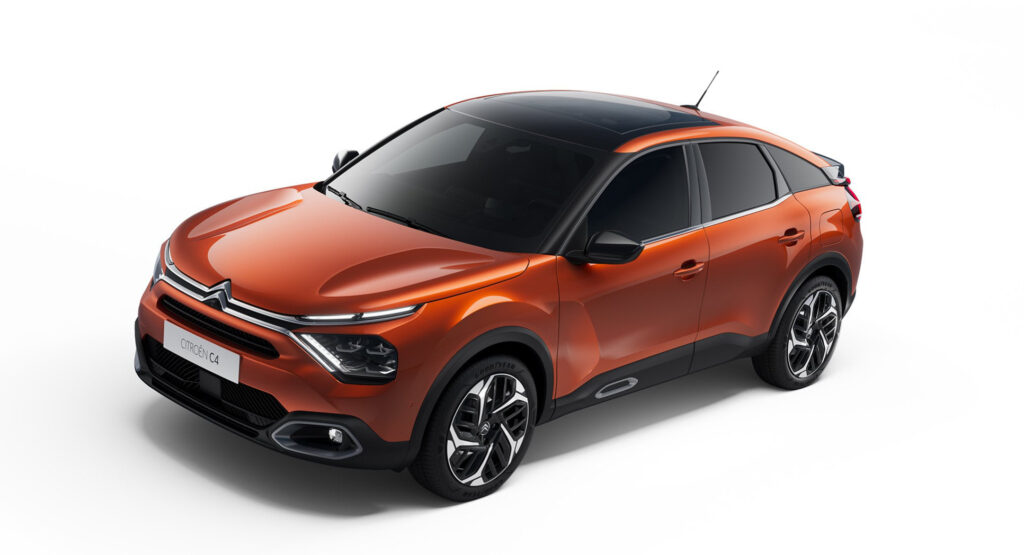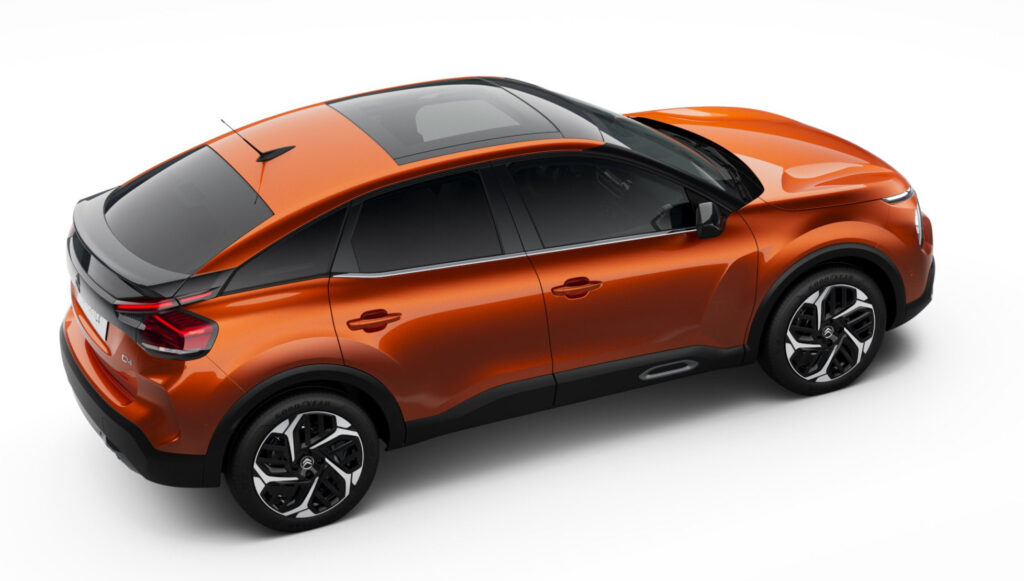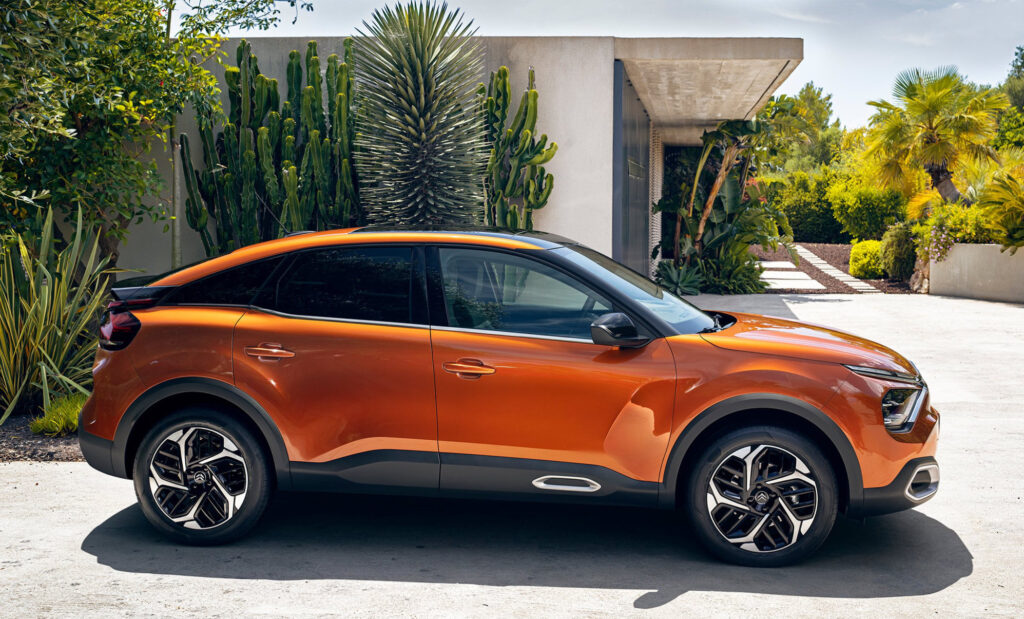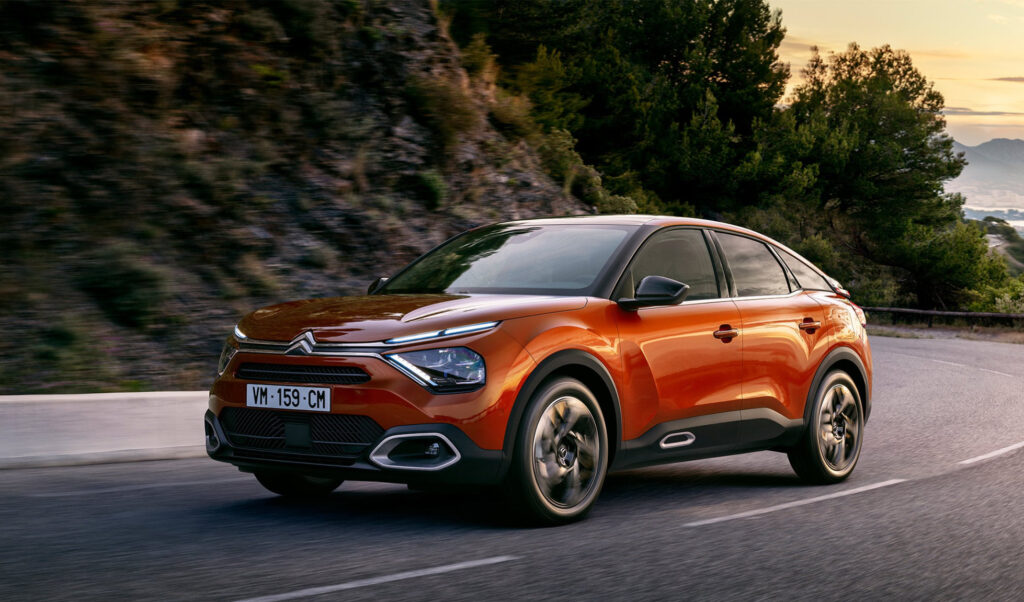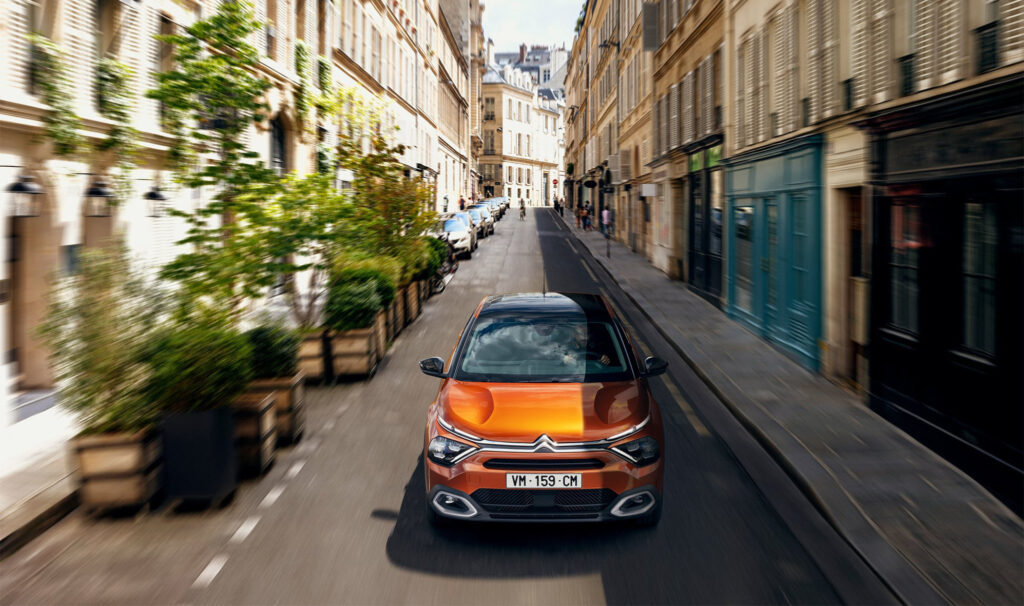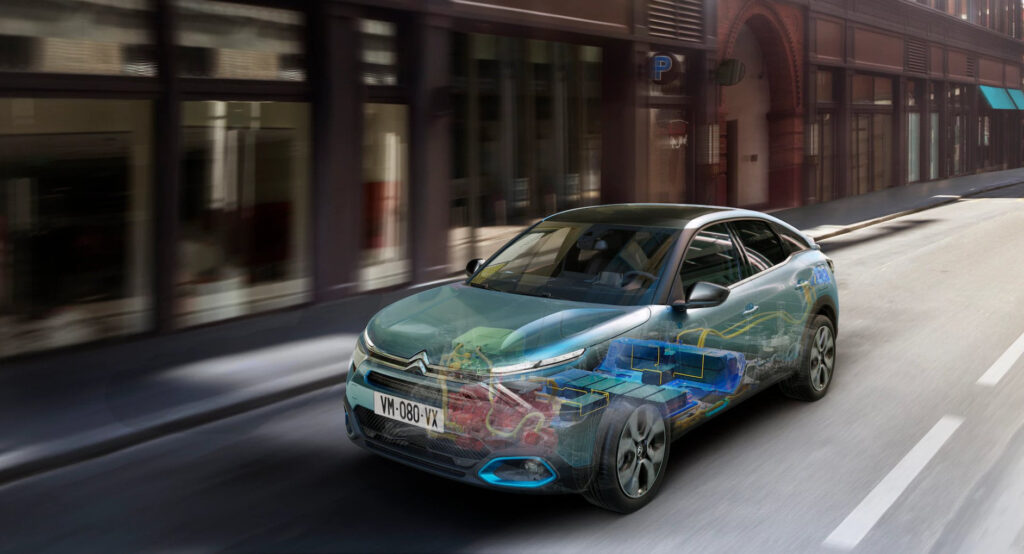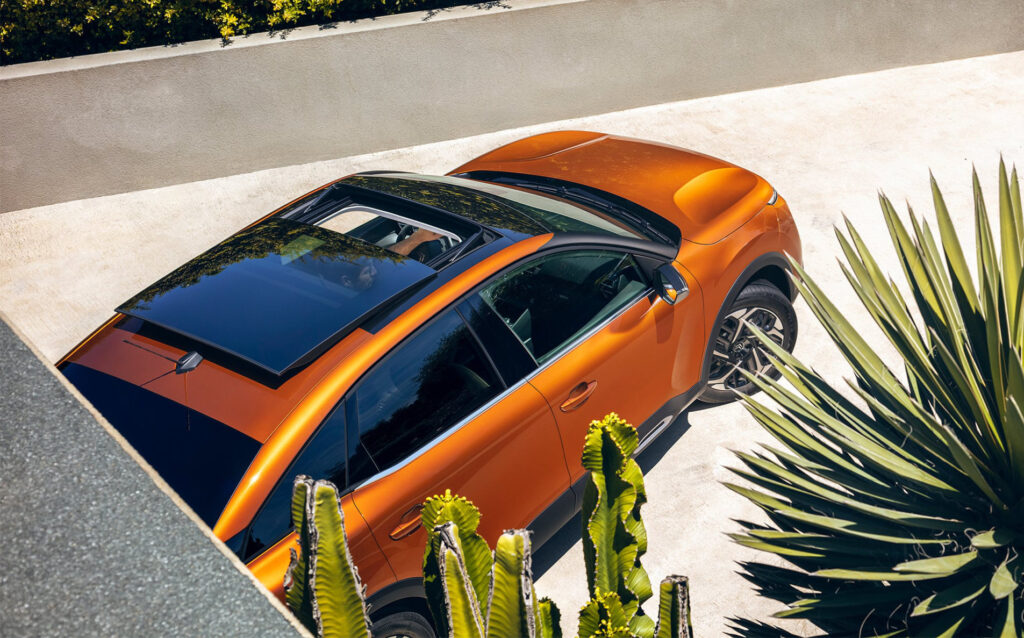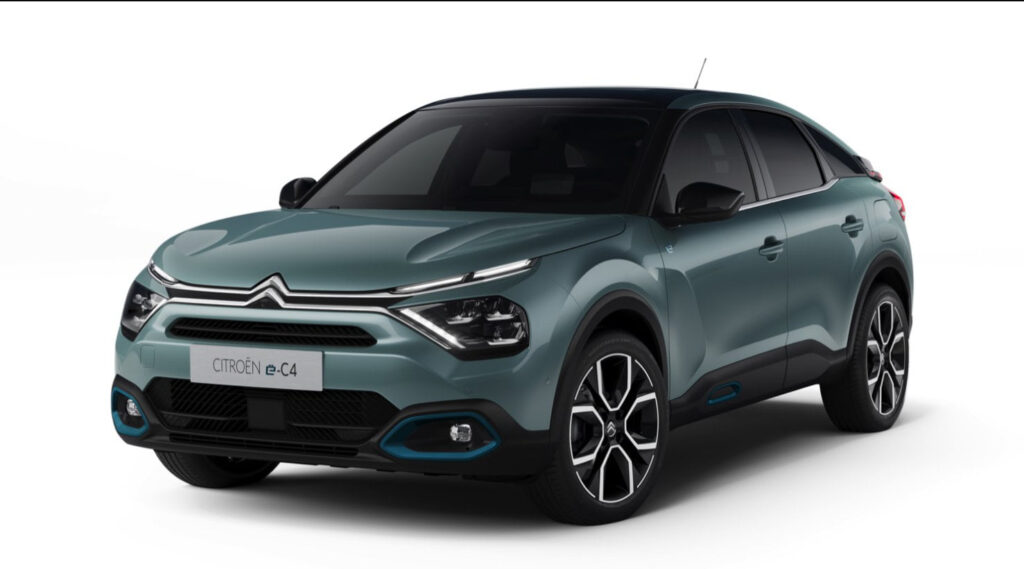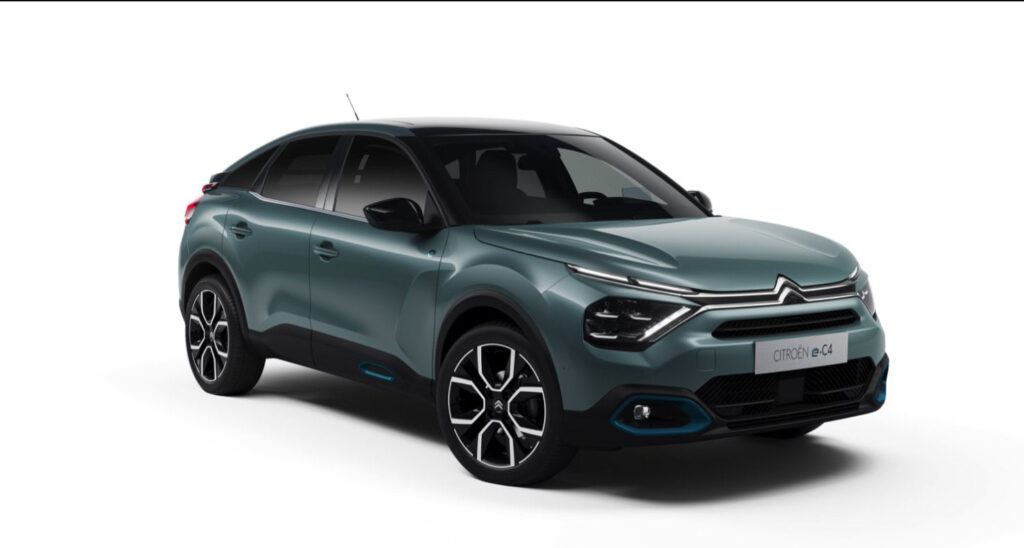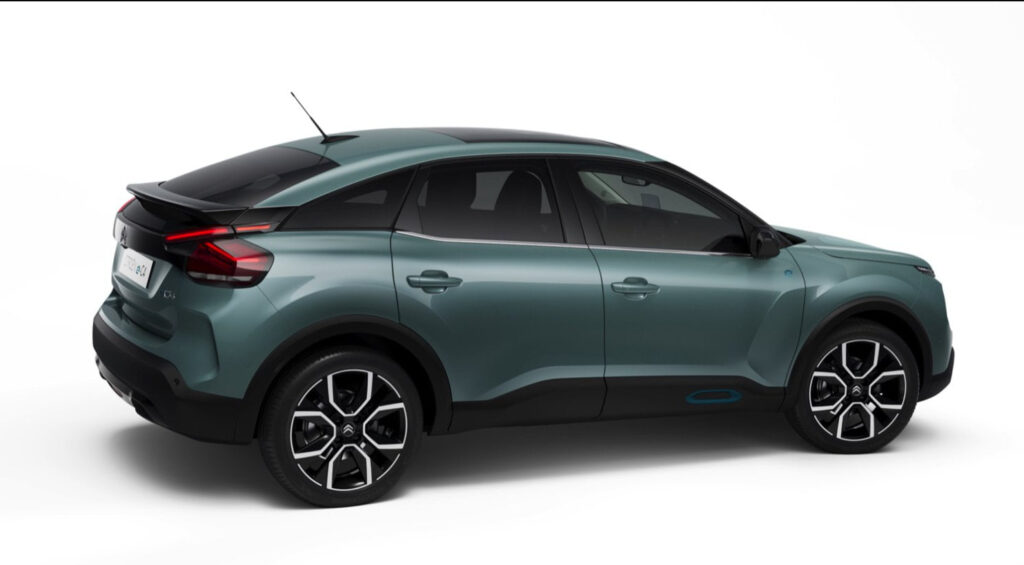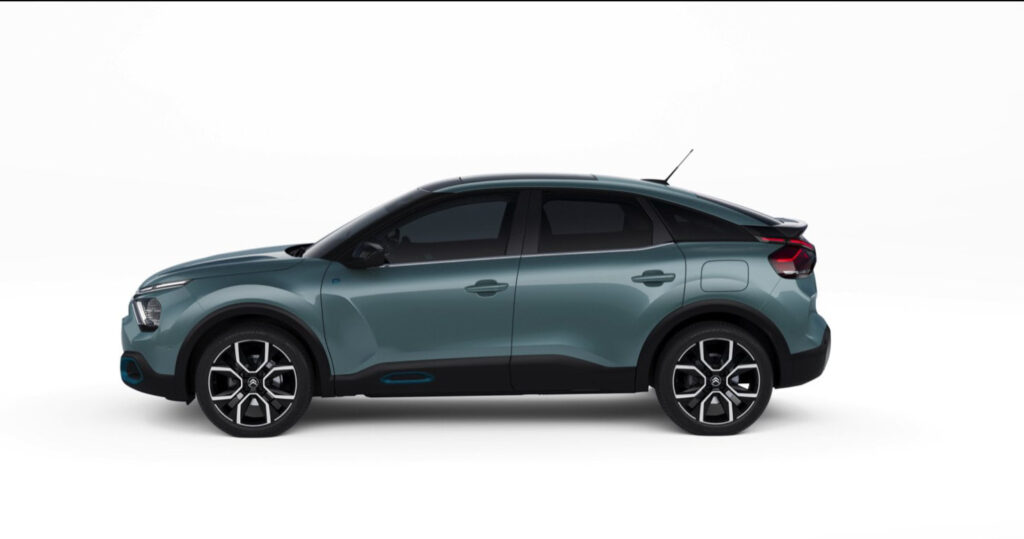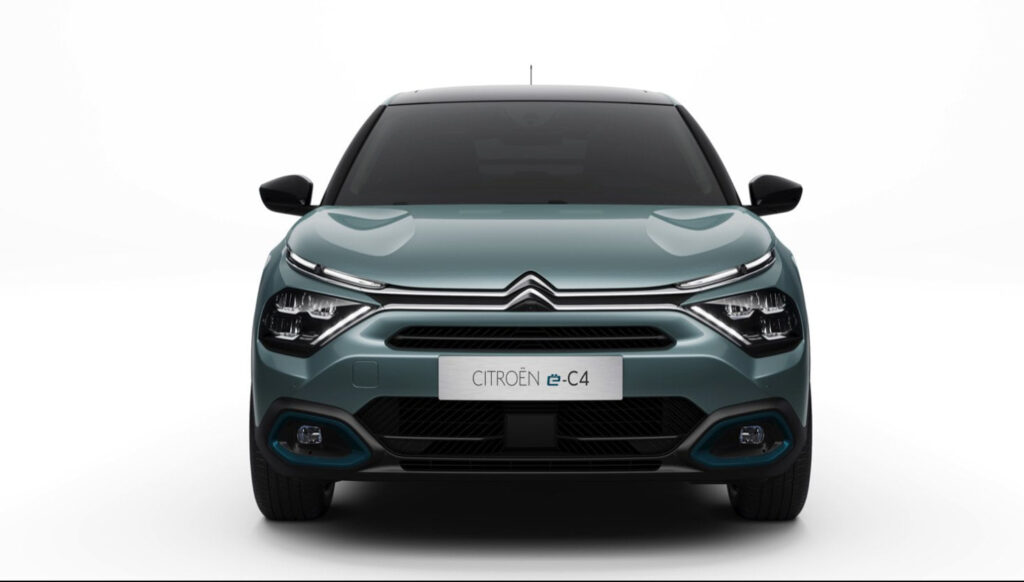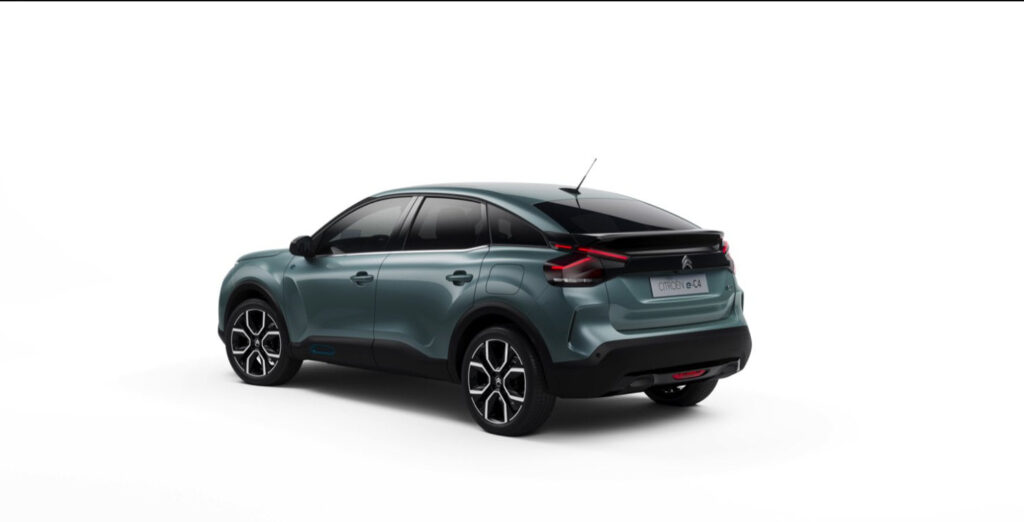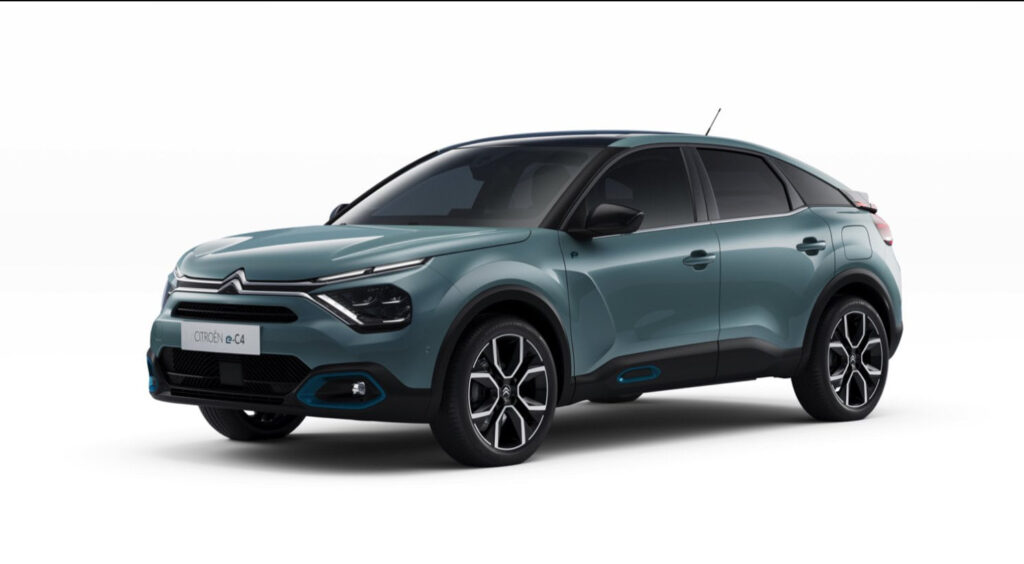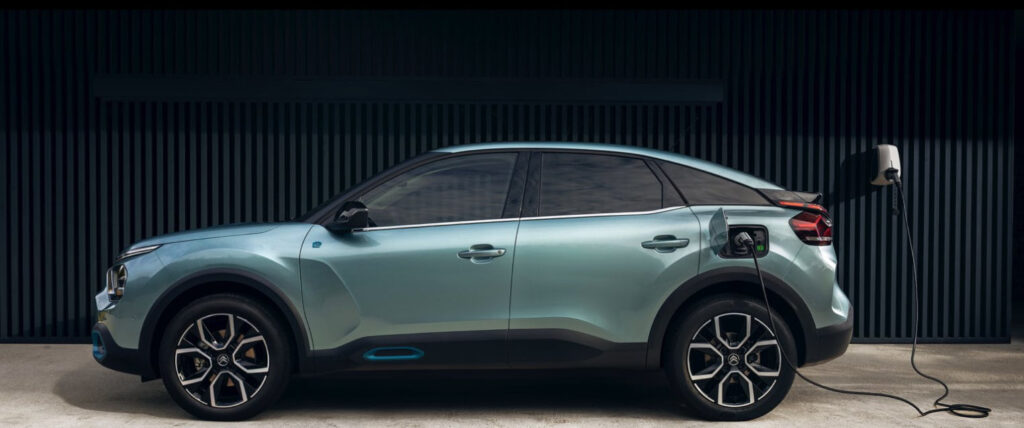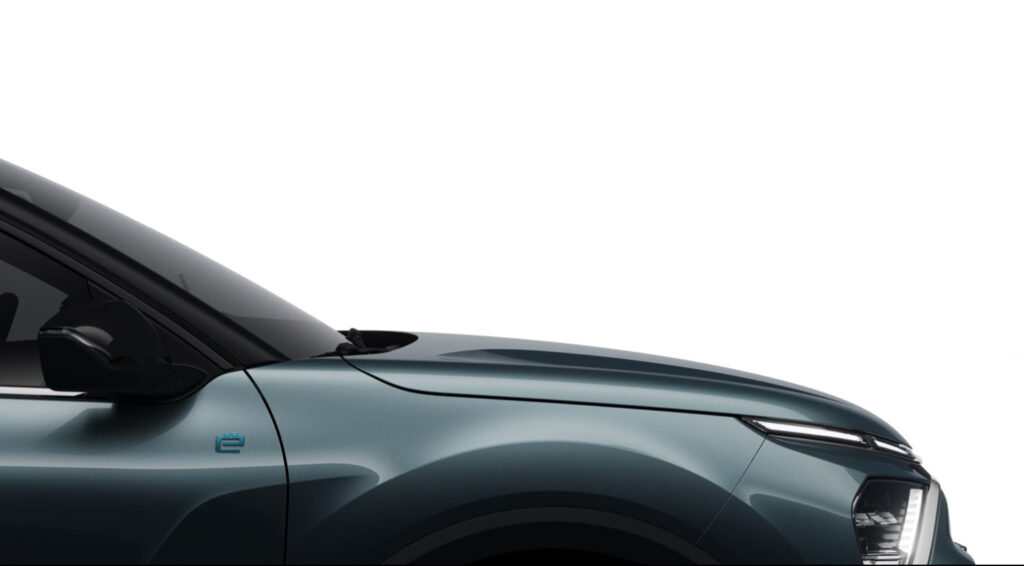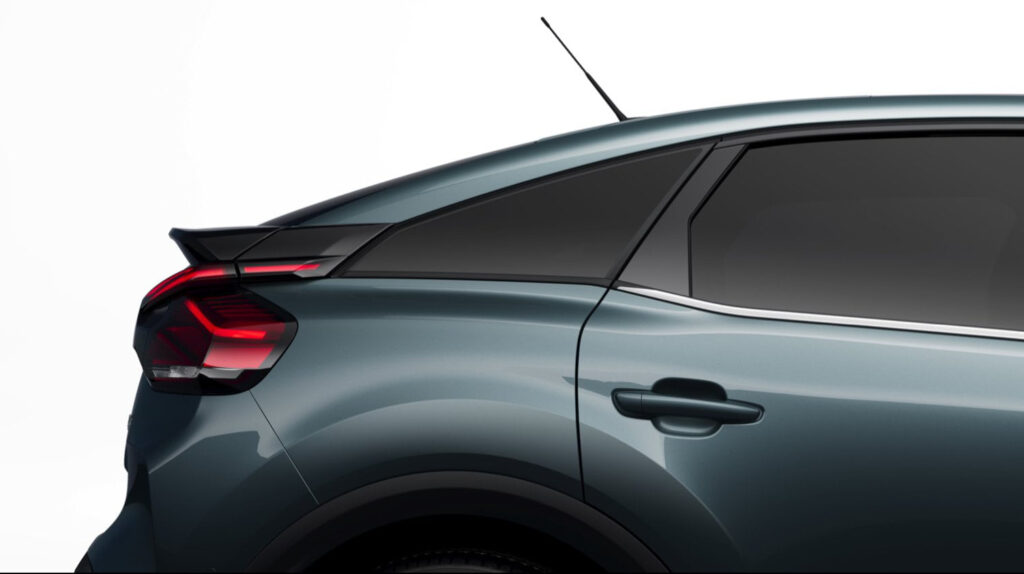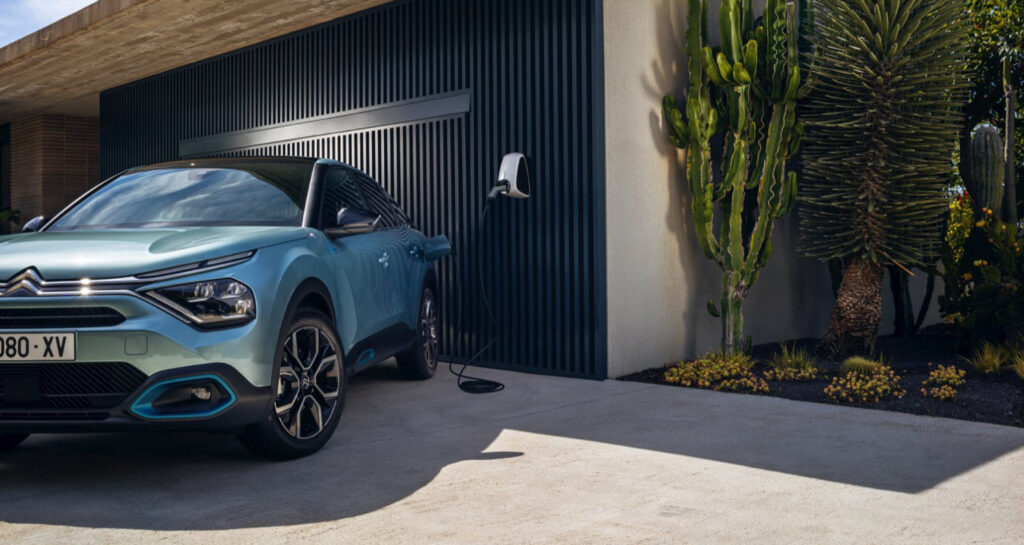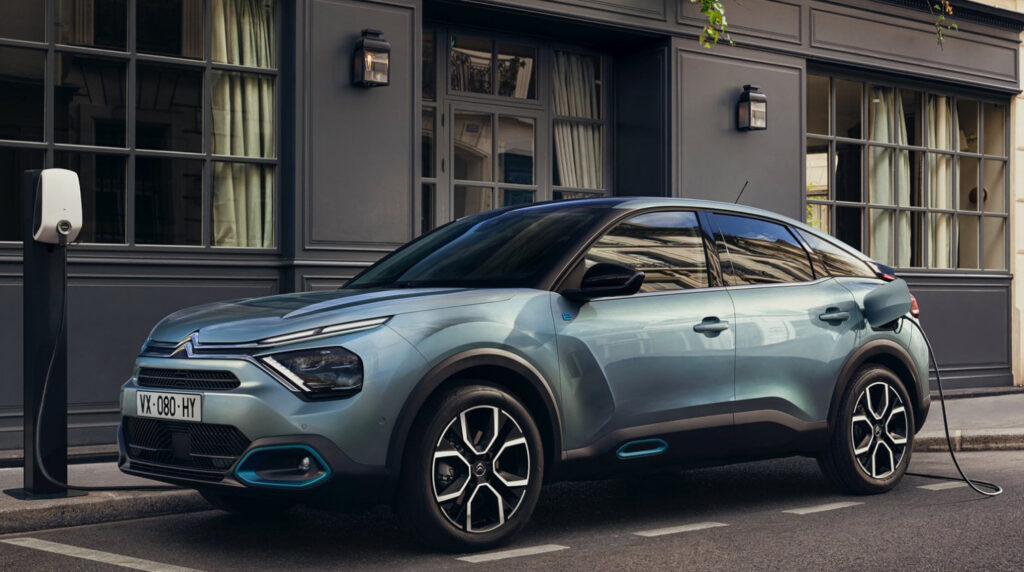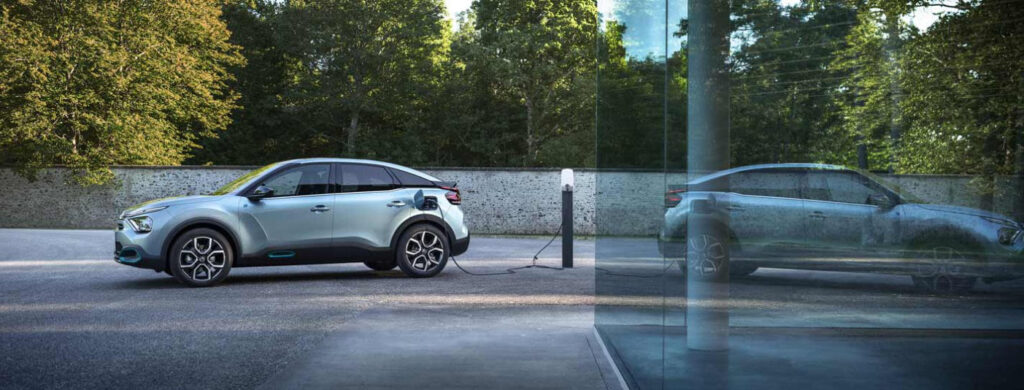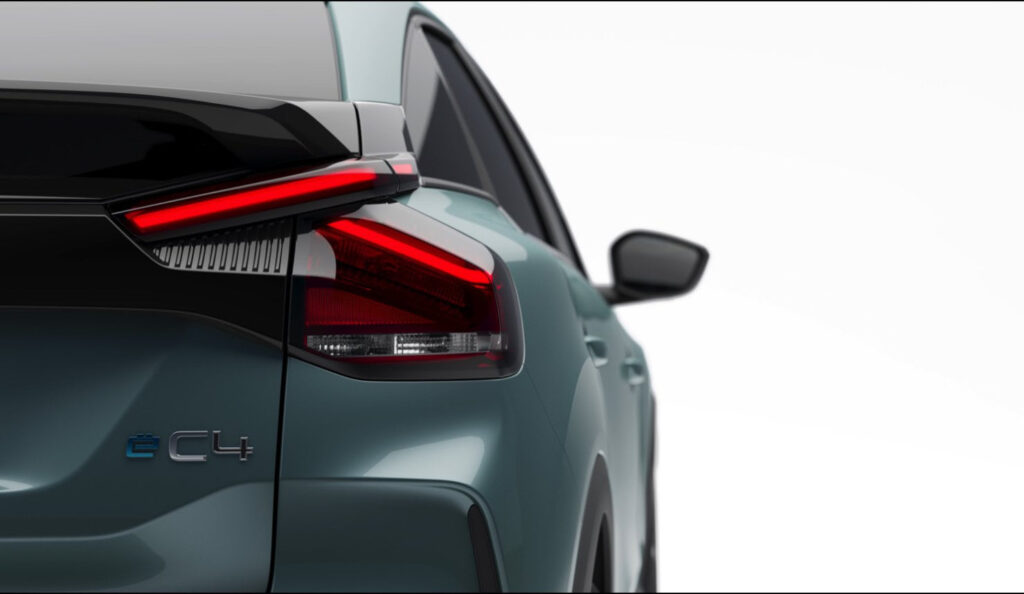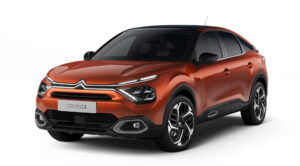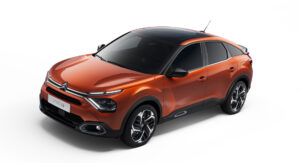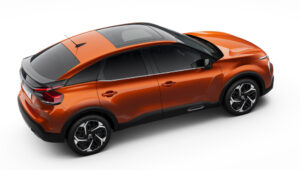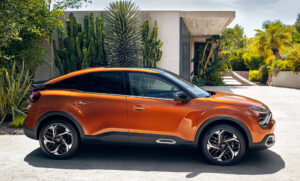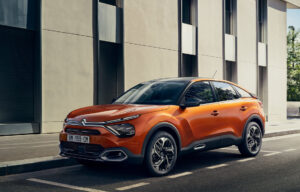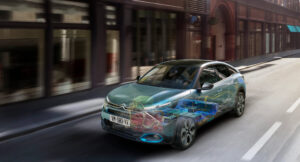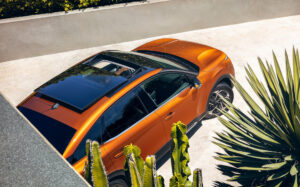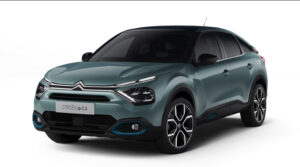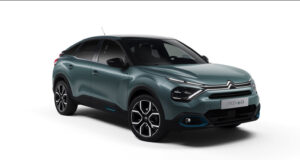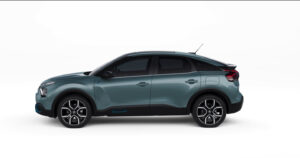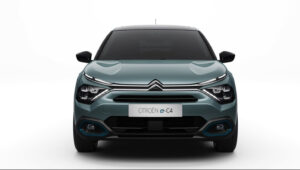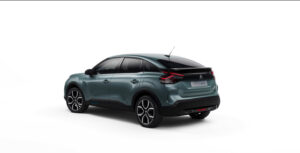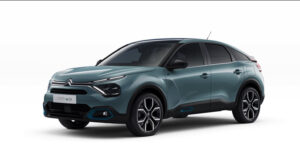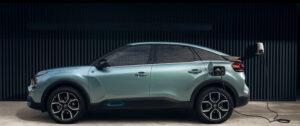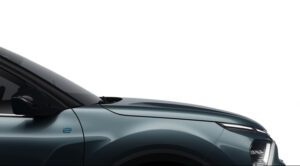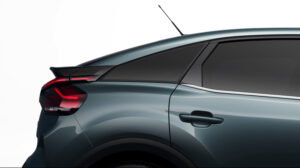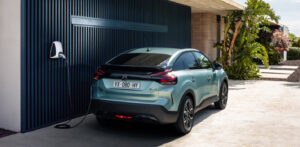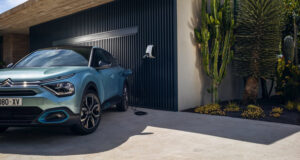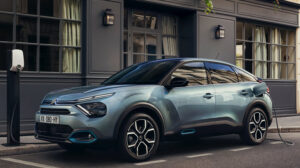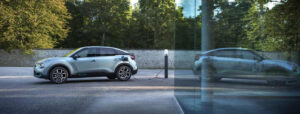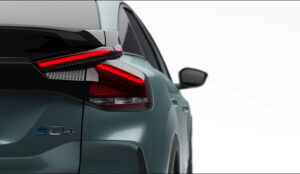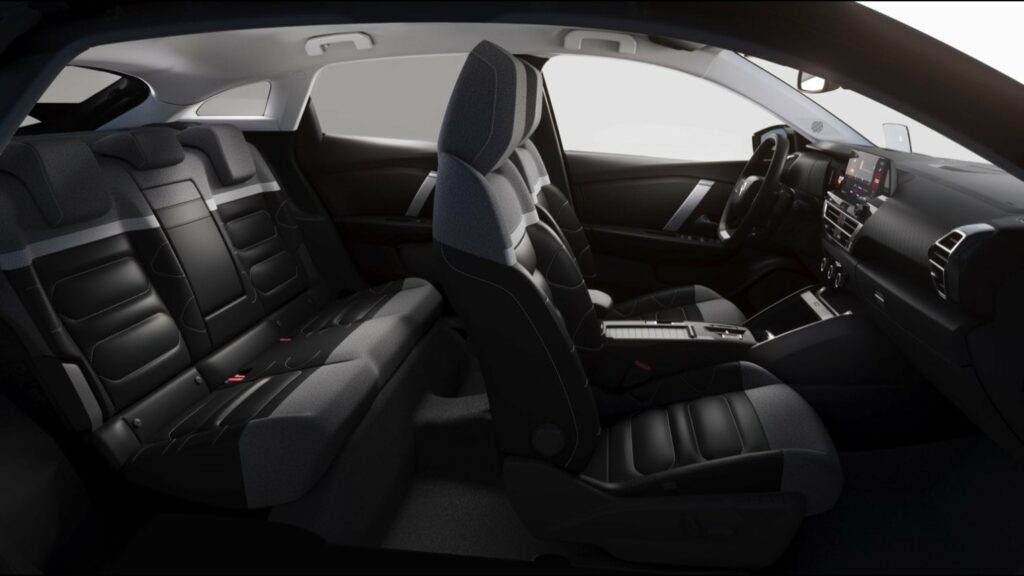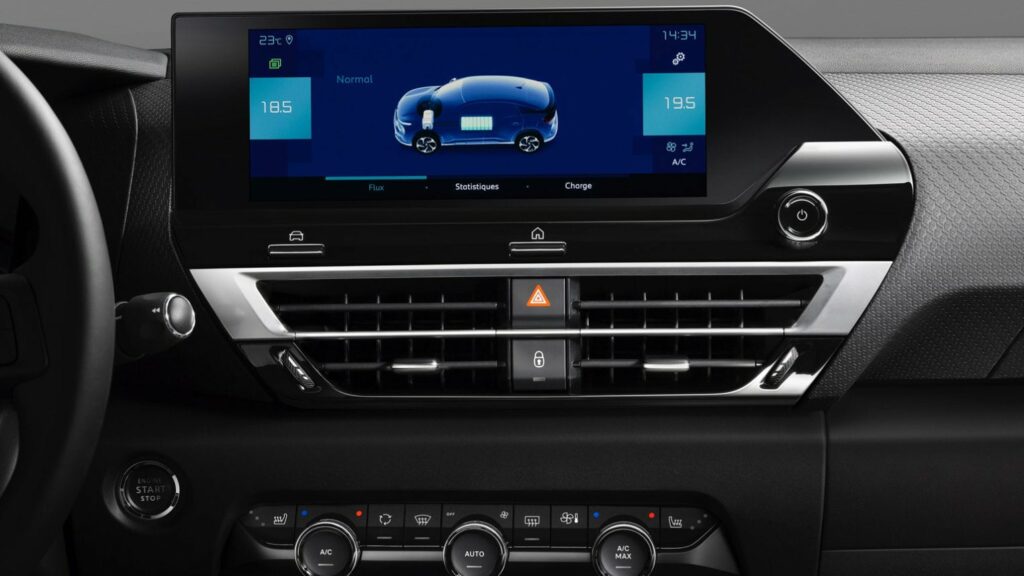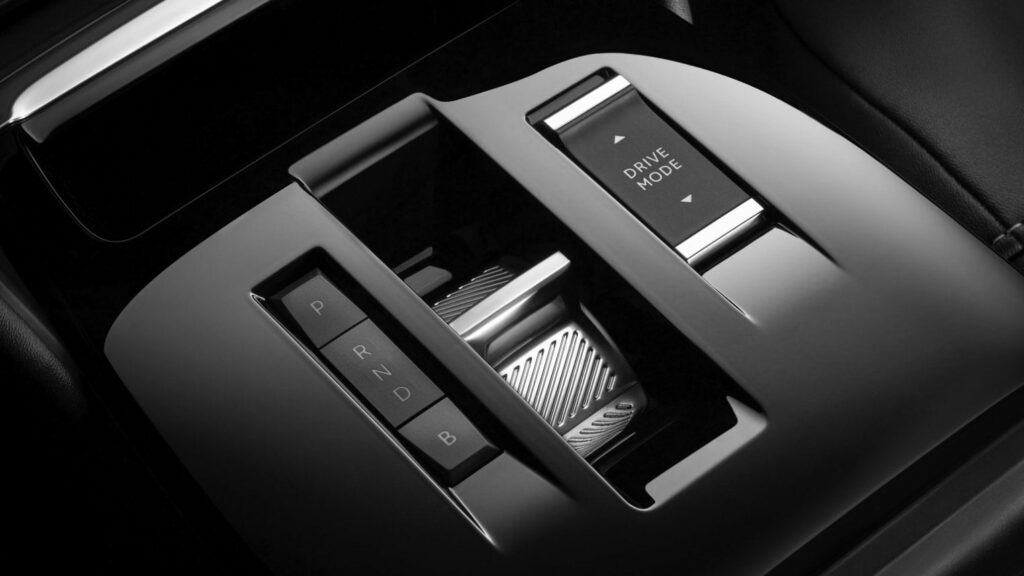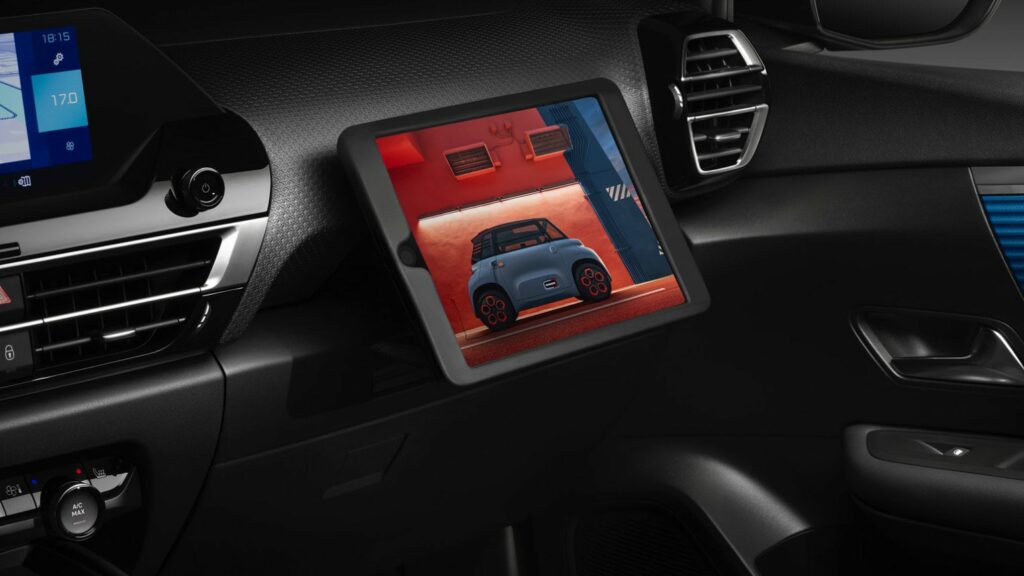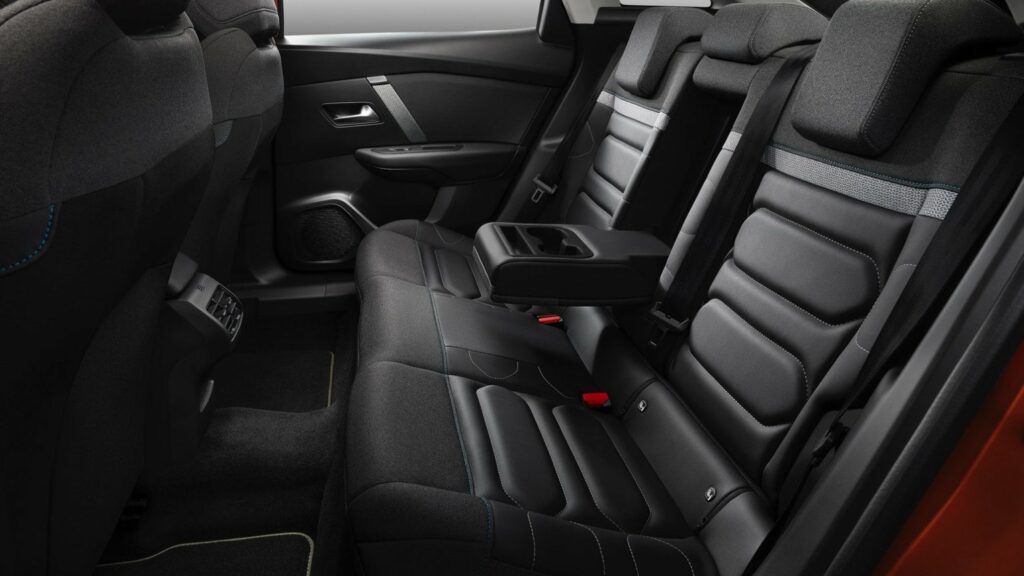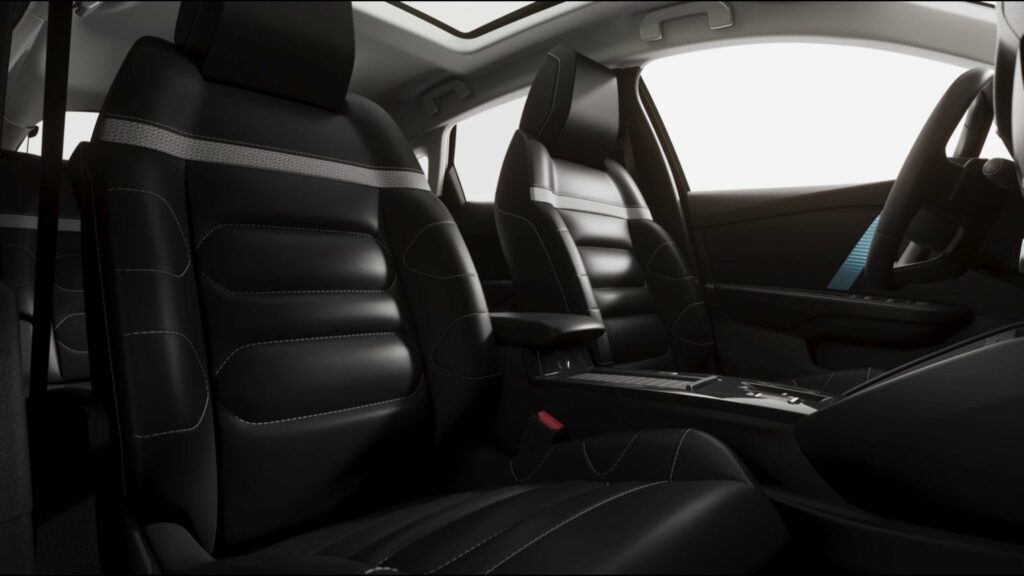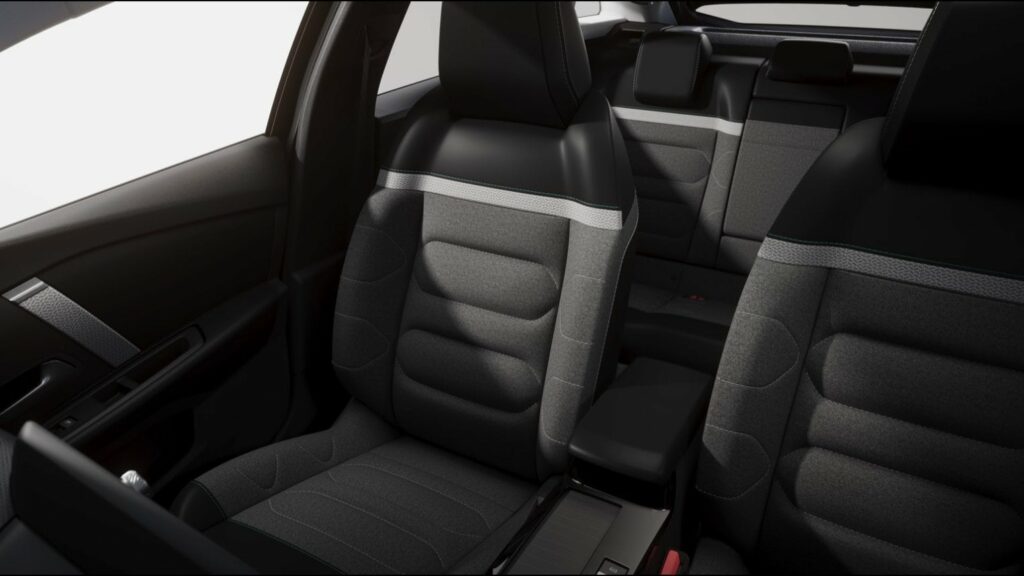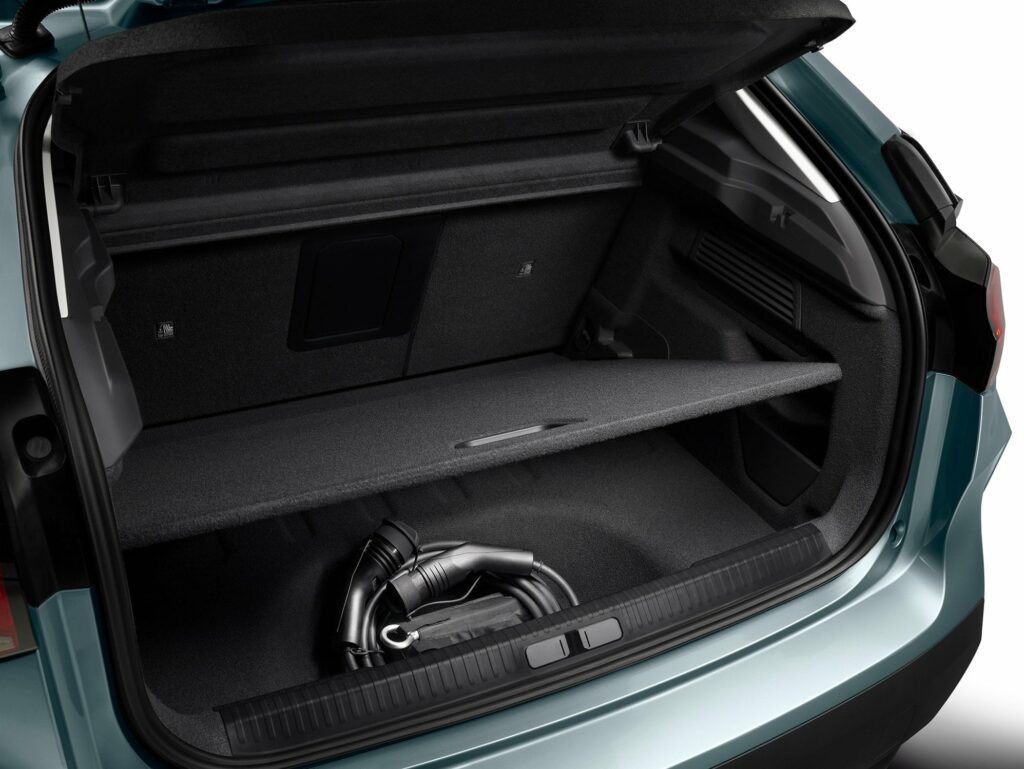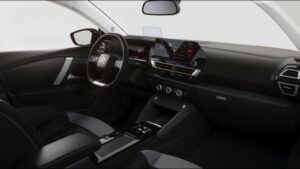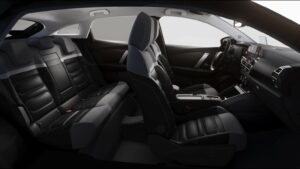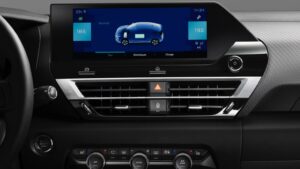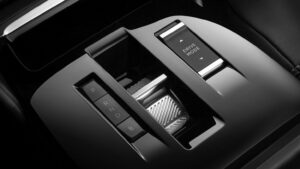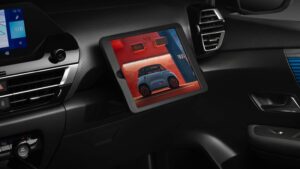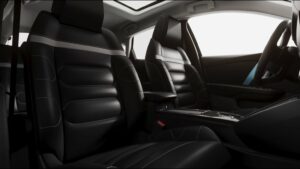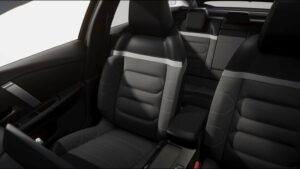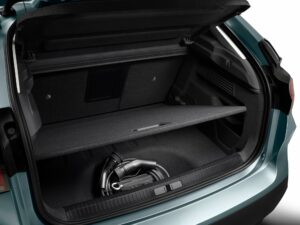Citroen e-C4
In 2020, the Citroen automobile company also did not spare any announcements of its new products. This time, it announced the start of production of its new electric car, the Citroen e-C4. The Citroen e-C4 is a 5-seat, 5-door all-electric hatchback, though it looks like a nice mid-sized crossover.
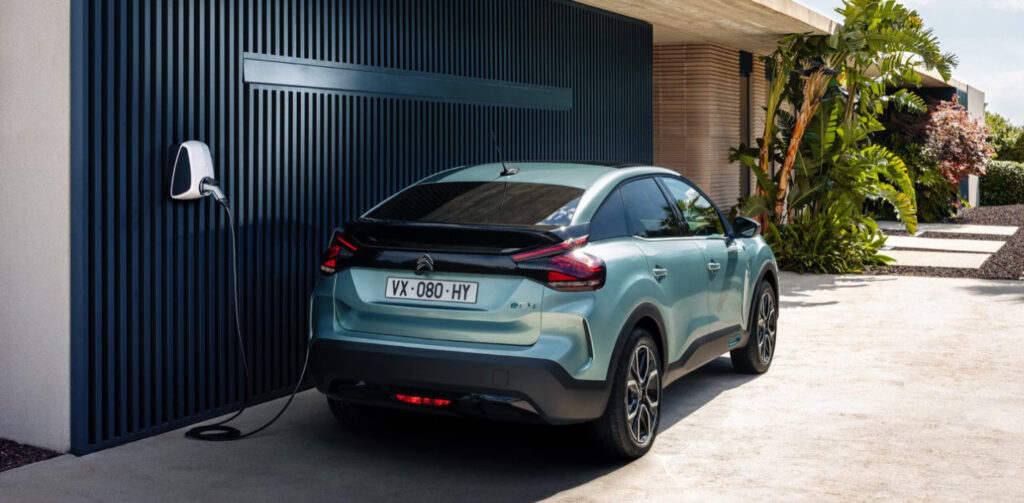
This electric car will be equipped with a battery with a capacity of 50 kWh, which is capable of providing a range of 350 km on a single charge on the cycle WLTP. However, the actual range is estimated at 250 km. The Citroen e-C4 uses regenerative braking. The battery can be recharged either from the 11kW network or from a 100kW high-speed charging station. Charging time from 0 to 80% takes 30 minutes.
The battery powers a 100 kW (134 hp) electric motor with 260 N*m of torque. 0-100 km/h acceleration will take 9.7 seconds and the top speed is limited to 150 km/h. The car has three driving modes: Eco, Normal, and Sport. Depending on the selected mode, the driving range and power consumption of various systems change.
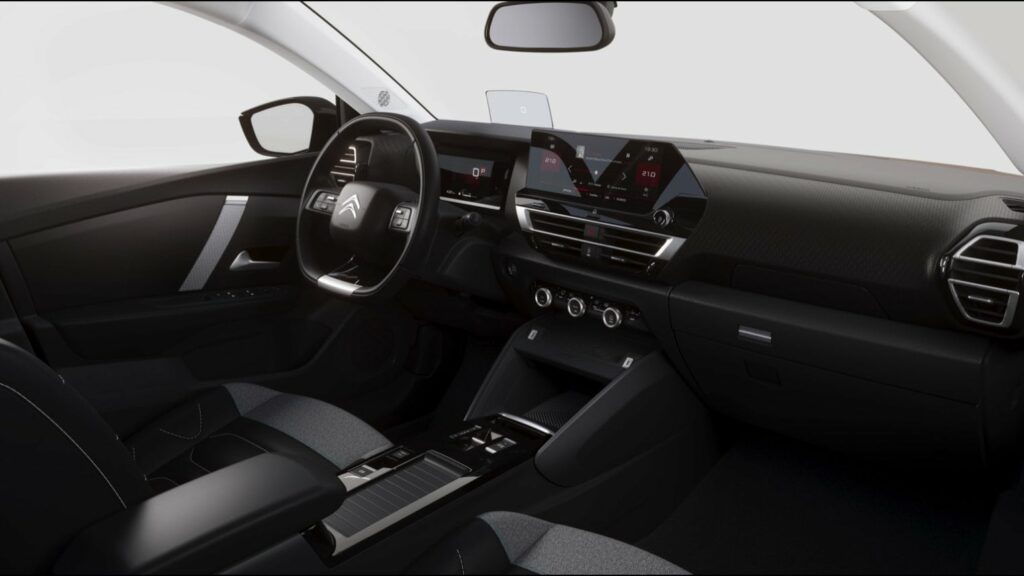
The manufacturer has made an emphasis on comfort and smoothness of motion. They are provided by Progressive Hydraulic Cushion suspension with two hydraulic stops. The new Citroen e-C4 has a more streamlined shape than its predecessor. Rather a high nose and a line of windows rise to the back of the car. DxHxV (mm) = 4,360 x 1,800 x 1,525. The large hexagonal headlights and low fog lights use all-LED lighting technology.
The interior is equipped with heated and massaging luxury seats. The manufacturer claims a large number of storage compartments for various things. The dashboard in front of the driver has a 10-inch touch screen with a large color projection display. There is a Full HD camera in the rear-view mirror, which can take both photo and video shots. Citroen offers driver assistance on the highway, as well as a Level 2 semi-autonomous system. It includes cruise control and lane keeping.
| Performance | |
| Acceleration 0 – 100 km/h | 9.7 sec |
| Top Speed | 150 km/h |
| Electric Range | 250 km |
| Total Power | 100 kW (136 PS) |
| Total Torque | 260 Nm |
| Drive | Front |
| Battery and Charging | |
| Battery Capacity | 50.0 kWh |
| Battery Useable | 45.0 kWh |
| Europe | |
| Charge Port | Type 2 |
| Port Location | Left Side – Rear |
| Charge Power | 7.4 kW AC |
| Charge Time (0->250 km) | 7h15m |
| Charge Speed | 35 km/h |
| Fastcharge Port | CCS |
| FC Port Location | Left Side – Rear |
| Fastcharge Power (max) | 99 kW DC |
| Fastcharge Time (25->200 km) | 31 min |
| Fastcharge Speed | 330 km/h |
| Energy Consumption | |
| EVDB Real Range | |
| Range * | 250 km |
| Vehicle Consumption * | 180 Wh/km |
| CO2 Emissions | 0 g/km |
| Vehicle Fuel Equivalent | 2.0 l/100km |
| WLTP Ratings | |
| Range | 350 km |
| Rated Consumption | No Data |
| Vehicle Consumption | 129 Wh/km |
| CO2 Emissions | 0 g/km |
| Rated Fuel Equivalent | No Data |
| Vehicle Fuel Equivalent | 1.4 l/100km |
|
Rated = official figures as published by manufacturer. Rated consumption and fuel equivalency figures include charging losses.
|
|
|
Vehicle = calculated battery energy consumption used by the vehicle for propulsion and on-board systems.
|
|
| Real Energy Consumption Estimation between 120 – 257 Wh/km | |
| City – Cold Weather * | 180 Wh/km |
| Highway – Cold Weather * | 257 Wh/km |
| Combined – Cold Weather * | 214 Wh/km |
| City – Mild Weather * | 120 Wh/km |
| Highway – Mild Weather * | 200 Wh/km |
| Combined – Mild Weather * | 158 Wh/km |
|
Energy use for each trip will vary considerably depending on the driver and the conditions. Therefore, we have provided a range of estimates which can be useful in developing an understanding of the potential benefits of this technology. |
|
| Safety Rating | |
| Adult Occupant | 80% |
| Child Occupant | 83% |
| Rating Year | 2021 |
| Vulnerable Road Users | 57% |
| Safety Assist | 63% |
| Dimensions and Weight | |
| Length | 4360 mm |
| Width | 1800 mm |
| Width with mirrors | 2032 mm |
| Height | 1525 mm |
| Wheelbase | 2670 mm |
| Weight Unladen (EU) | 1650 kg |
| Gross Vehicle Weight (GVWR) | No Data |
| Max. Payload | No Data |
| Cargo Volume | 380 L |
| Cargo Volume Max | 1250 L |
| Cargo Volume Frunk | No Data |
| Roof Load | No Data |
| Tow Hitch Possible | No Data |
| Towing Weight Unbraked | No Data |
| Towing Weight Braked | No Data |
| Vertical Load Max | No Data |
| Miscellaneous | |
| Seats | 5 people |
| Isofix | No Data |
| Turning Circle | 10.9 m |
| Platform | PSA eCMP |
| Car Body | Hatchback |
| Segment | JC – Medium |
| Roof Rails | No Data |
| EV Dedicated Platform | No |
Home and Destination Charging (0 -> 100%)
A public charging station is required to use the highest possible charging rate. The EVSE/charging station’s charging capacity affects how long it takes to fully charge the battery. The table below shows all possible options for fully charging the Citroen e-C4.
In Europe, plugging an electric car into an outlet is often as easy as plugging it into a household outlet, but there are differences from country to country. The table below shows the different ways to charge the Citroen e-C4, but in some countries some chargers may not be available.
Type 2 (Mennekes – IEC 62196)

| Charging Point | Max. Power | Power | Time | Rate |
| Standard 7.4 kW On-Board Charger | ||||
| Wall Plug (2.3 kW) | 230V / 1x10A | 2.3 kW | 23h15m | 11 km/h |
| 1-phase 16A (3.7 kW) | 230V / 1x16A | 3.7 kW | 14h30m | 17 km/h |
| 1-phase 32A (7.4 kW) | 230V / 1x32A | 7.4 kW | 7h15m | 34 km/h |
| 3-phase 16A (11 kW) | 230V / 1x16A | 3.7 kW | 14h30m | 17 km/h |
| 3-phase 32A (22 kW) | 230V / 1x32A | 7.4 kW | 7h15m | 34 km/h |
| Optional 11.0kW On-Board Charger | ||||
| Wall Plug (2.3 kW) | 230V / 1x10A | 2.3 kW | 23h15m | 11 km/h |
| 1-phase 16A (3.7 kW) | 230V / 1x16A | 3.7 kW | 14h30m | 17 km/h |
| 1-phase 32A (7.4 kW) | 230V / 1x32A | 7.4 kW | 7h15m | 34 km/h |
| 3-phase 16A (11 kW) | 400V / 3x16A | 11 kW | 5 hours | 50 km/h |
| 3-phase 32A (22 kW) | 400V / 3x16A | 11 kW | 5 hours | 50 km/h |
Fast Charging (10 -> 80%)
If you want to enjoy driving an electric car, one of the most important features to consider is the number of miles per hour the car can travel while charged. This is called the “range” of the car. All electric cars have a certain range, even if they are 100% charged. This is because they do not have an internal combustion engine to lean on if you need to drive a long distance.
Max. Power: The maximum power provided by the charging point
Avg. Power: The average power provided by the charging point during a session of 10% to 80%.
Time: the time it takes to charge from 10% to 80%
Speed: the average charging rate during the session of 10% to 80%
Combined Charging System (CCS Combo 2)
| Charging Point | Max. Power | Avg. Power | Time | Rate |
| CCS (50 kW DC) | 50 kW | 46 kW | 43 min | 240 km/h |
| CCS (175 kW DC) | 99 kW | 65 kW | 31 min | 330 km/h |
| CCS (350 kW DC) | 99 kW | 65 kW | 31 min | 330 km/h |
| Brand | Citroen |
| Model | e-C4 |
| Body Style | Hatchback |
| Car Engine | electric |
| Motor power | 100 |
| Maximum Torque, Nm | 260 |
| Battery Energy, kWh | 50.0 |
| Power reserve (NEDC/EPA/WLTP), km | - / - / 250 |
| Level Charging (230/400/DC), hours | - / - / 0.31 |
| Electrical Acceleration, 0-100 km/h (0-62.1 mph) in sec | 9.7 |
| Top Speed, km/h | 150 |
